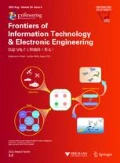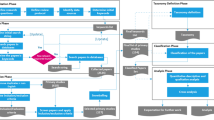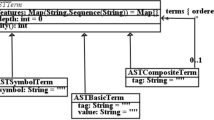Abstract
Why is it important to verify/validate model transformations? The motivation is to improve the quality of the transformations, and therefore the quality of the generated software artifacts. Verified/validated model transformations make it possible to ensure certain properties of the generated software artifacts. In this way, verification/validation methods can guarantee different requirements stated by the actual domain against the generated/modified/optimized software products. For example, a verified/validated model transformation can ensure the preservation of certain properties during the model-to-model transformation. This paper emphasizes the necessity of methods that make model transformation verified/validated, discusses the different scenarios of model transformation verification and validation, and introduces the principles of a novel test-driven method for verifying/validating model transformations. We provide a solution that makes it possible to automatically generate test input models for model transformations. Furthermore, we collect and discuss the actual open issues in the field of verification/validation of model transformations.
Similar content being viewed by others
References
Akehurst, D., Kent, S., 2002. A relational approach to defining transformations in a metamodel. LNCS, 2460:243–258. [doi:10.1007/3-540-45800-X_20]
Amrani, M., Dingel, J., Lambers, L., et al., 2012. Towards a model transformation intent catalog. Proc. 1st Workshop on the Analysis of Model Transformations, p.3–8. [doi:10.1145/2432497.2432499]
Assmann, U., 1996. How to uniformly specify program analysis and transformation with graph rewrite systems. LNCS, 1060:121–135. [doi:10.1007/3-540-61053-7_57]
Assmann, U., Ludwig, A., 2000. Aspect weaving with graph rewriting. LNCS, 1799:24–36. [doi:10.1007/3-540-40048-6_3]
Asztalos, M., Lengyel, L., Levendovszky, T., 2010a. Towards automated, formal verification of model transformations. IEEE Int. Conf. on Software Testing V&V, p.15–24.
Asztalos, M., Ekler, P., Lengyel, L., et al., 2010b. Applying online verification of model transformations to mobile social networks. Electronic Communications of the EASST. Proc. 4th Int. Workshop on Graph-Based Tools.
Blostein, D., Fahmy, H., Grbavec, A., 1996. Issues in the practical use of graph rewriting. LNCS, 1073:38–55. [doi: 10.1007/3-540-61228-9_78]
Czarnecki, K., Helsen, S., 2006. Feature-based survey of model transformation approaches. IBM Syst. J., 45(3): 621–646. [doi:10.1147/sj.453.0621]
de Lara, J., Taentzer, G., 2004. Automated model transformation and its validation using AToM3 and AGG. LNCS, 2980:182–198. [doi:10.1007/978-3-540-25931-2_18]
de Lara, J., Vangheluwe, H., Alfonseca, M., 2004. Metamodelling and graph grammars for multiparadigm modelling in AToM. Softw. Syst. Model., 3(3):194–209. [doi:10.1007/s10270-003-0047-5]
Ehrig, H., Habel, A., Kreowski, H.J., et al., 1991a. From graph grammars to high level replacement systems. LNCS, 532:269–291. [doi:10.1007/BFb0017395]
Ehrig, H., Habel, A., Kreowski, H.J., et al., 1991b. Parallelism and concurrency in high-level replacement systems. Math. Struct. Comput. Sci., 1(3):361–404.
Ehrig, H., Engels, G., Kreowski, H.J., et al. (Eds.), 1999. Handbook on Graph Grammars and Computing by Graph Transformation: Application, Languages and Tools. World Scientific, Singapore.
Ehrig, H., Habel, A., Padberg, J., et al., 2004. Adhesive high-level replacement categories and systems. LNCS, 3256:144–160. [doi:10.1007/978-3-540-30203-2_12]
Ehrig, H., Ehrig, K., Prange, U., et al., 2006. Fundamentals of Algebraic Graph Transformation. Monographs in Theoretical Computer Science, Springer.
Giese, H., Glesner, S., Leitner, J., et al., 2006. Towards verified model transformations. ModeVVa Workshop Associated to MODELS, p.78–93.
Guerra, E., de Lara, J., 2007. Event-driven grammars: relating abstract and concrete levels of visual languages. Softw. Syst. Model., 6(3):317–347. [doi:10.1007/s10270-007-0051-2]
Habel, A., Heckel, R., Taentzer, G., 1996. Graph grammars with negative application conditions. Fundam. Inform., 26:287–313.
Hetzel, W.C., 1998. The Complete Guide to Software Testing (2nd Ed.). Wiley.
Kaner, C., 2006. Exploratory testing. Quality Assurance Institute Worldwide Annual Software Testing Conf.
Kaner, C., Falk, J., Nguyen, H.Q., 1990. Testing Computer Software (2nd Ed.). Wiley, New York.
Karsai, G., Agrawal, A., Shi, F., et al., 2003. On the use of graph transformation in the formal specification of model interpreters. J. Univ. Comput. Sci., 9(11):1296–1321.
Kolawa, A., Huizinga, D., 2007. Automated Defect Prevention: Best Practices in Software Management. Wiley-IEEE Computer Society Press, p.41–43.
Lack, S., Sobocinski, P., 2004. Adhesive categories. LNCS, 2987:273–288.
Leitner, A., Ciupa, I., Oriol, M., et al., 2007. Contract Driven Development = Test Driven Development — Writing Test Cases. Proc. 6th Joint Meeting of the European Software Engineering Conf. and the ACM SIGSOFT Symp. on the Foundations of Software Engineering, p.425–434. [doi:10.1145/1287624.1287685]
Lengyel, L., 2006. Online Validation of Visual Model Transformations. PhD Thesis, Department of Automation and Applied Informatics, Budapest University of Technology and Economics, Budapest, Hungary.
Mens, T., van Gorp, P., 2006. A taxonomy of model transformation. Proc. Int. Workshop on Graph and Model Transformation, p.125–142.
Narayanan, A., Karsai, G., 2008. Towards verifying model transformations. Electron. Notes Theor. Comput. Sci., 211:191–200. [doi:10.1016/j.entcs.2008.04.041]
OMG, 2010. Unified Modeling Language (UML) Specification, Version 2.3, OMG document formal/2010-05-03, Available from http://www.uml.org/.
OMG, 2011. OMG Query/View/Transformation (QVT) Specification, Meta Object Facility 2.0 Query/Views/Transformation Specification. OMG doc. formal/2011. 01.01. Available from http://www.omg.org/spec/QVT/.
OMG, 2012. OMG Object Constraint Language (OCL) Specification, Version 2.3.1. OMG Document Formal/2012-05-09. Available from http://www.omg.org/spec/OCL/.
OMG, 2014. OMG Model-Driven Architecture (MDA) Specification. OMG Document ormsc/14-06-01. Available from http://www.omg.org/mda/.
Pan, J., 1999. Software Testing — 18-849b Dependable Embedded Systems. Carnegie Mellon University. Available from http://users.ece.cmu.edu/~koopman/des_s99/sw_testing/.
Plump, D., 1998. Termination of graph rewriting is undecidable. Fundam. Inf., 33(2):201–209.
Rozenberg, G. (Ed.), 1997. Handbook on Graph Grammars and Computing by Graph Transformation: Foundations. World Scientific, Singapore.
Schürr, A., 1994. Specification of graph translators with triple graph grammars. LNCS, 903:151–163. [doi:10.1007/3- 540-59071-4_45]
Syriani, E., 2009. Matters of Model Transformation. No. SOCS-TR-2009.2, School of Computer Science, McGill University.
Taentzer, G., Ehrig, K., Guerra, E., et al., 2005. Model transformation by graph transformation: a comparative study. ACM/IEEE 8th Int. Conf. on Model Driven Engineering Languages and Systems, p.1–48.
Vajk, T., Kereskényi, R., Levendovszky, T., et al., 2009. Raising the abstraction of domain-specific model translator development. 16th Annual IEEE Int. Conf. and Workshop on the Engineering of Computer Based Systems, p.31–37. [doi:10.1109/ECBS.2009.30]
van Gorp, P., Stenten, H., Mens, T., et al., 2003. Towards automating source-consistent UML refactorings. LNCS, 2863:144–158. [doi:10.1007/978-3-540-45221-8_15]
Varró, D., Pataricza, A., 2003. Automated formal verification of model transformations. Proc. UML03 Workshop, p.63–78.
Varró, D., Varró-Gyapay, S., Ehrig, H., et al., 2006. Termination analysis of model transformations by Petri nets. LNCS, 4178:260–274. [doi:10.1007/11841883_19]
Author information
Authors and Affiliations
Corresponding author
Additional information
Project partially supported by the European Union and the European Social Fund (No. TAMOP-4.2.2.C-11/1/KONV-2012-0013)
ORCID: László LENGYEL, http://orcid.org/0000-0002-5129-4198; Hassan CHARAF, http://orcid.org/0000-0002-8911-0219
Rights and permissions
About this article
Cite this article
Lengyel, L., Charaf, H. Test-driven verification/validation of model transformations. Frontiers Inf Technol Electronic Eng 16, 85–97 (2015). https://doi.org/10.1631/FITEE.1400111
Received:
Accepted:
Published:
Issue Date:
DOI: https://doi.org/10.1631/FITEE.1400111




